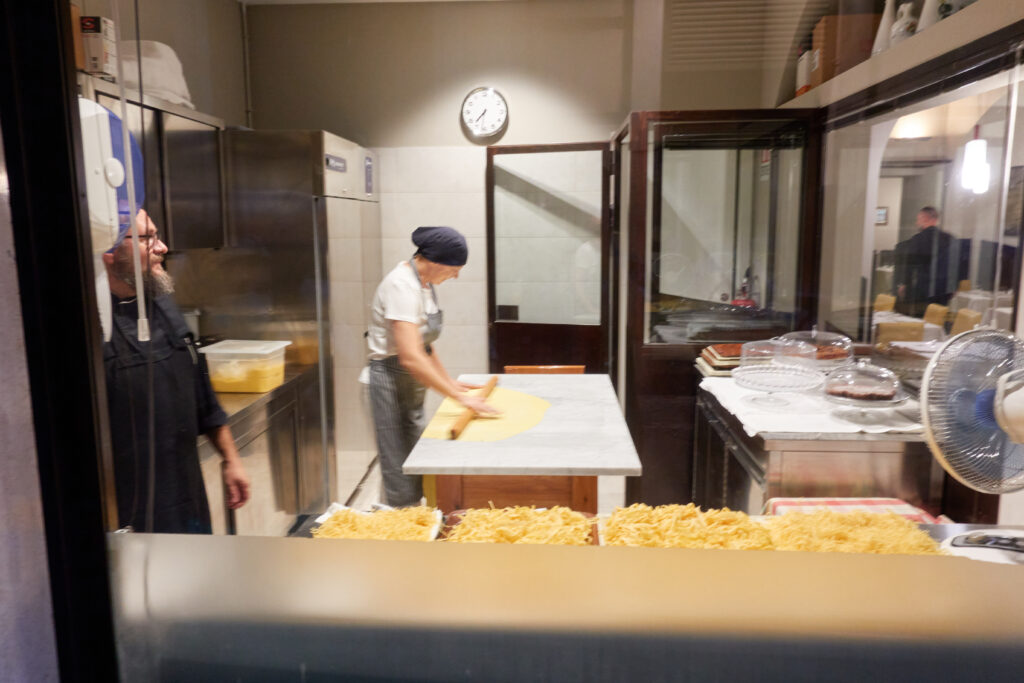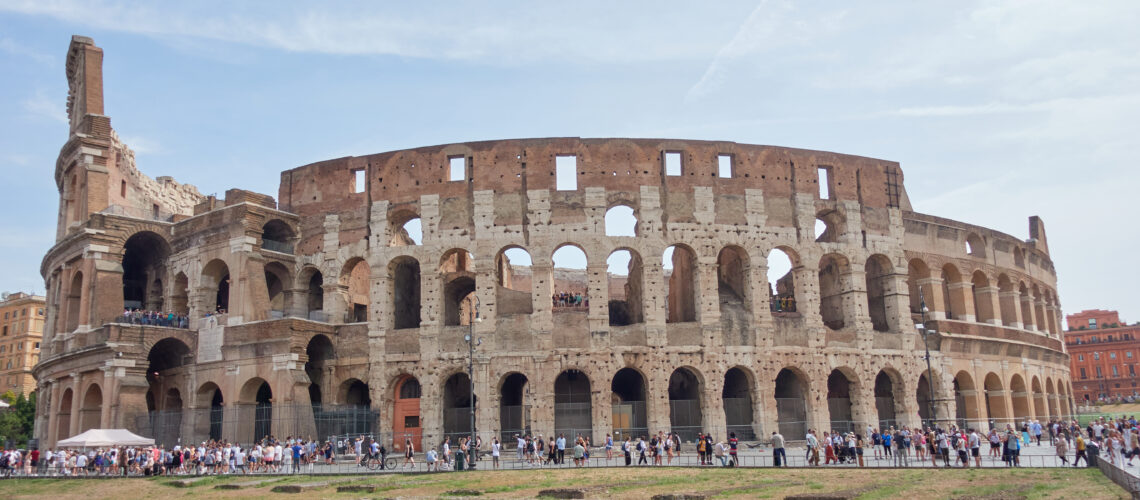Wednesday morning we woke up after only two snoozes of my alarm. I showered and then went to check on when the farmacia just down the street opened. Turns out they have pretty reasonable hours, so I got some breakfast and headed back and was the first customer there at 8:30. I had been given very specific instructions to ask for benzonatate… which the woman looked at me kinda sillily. After I showed her on her phone she said “ah, ben-zon-ah-ta-tay” which was a way more exciting pronunciation. They still didn’t have it, but at least I learned that molecules sound fancier in Italian. I returned from my shopping trip (empty handed) and we met our guide for the morning – Katia – in the lobby of the hotel. After a brief introduction we started the five minute walk over to the Colosseum. Katia seemed to be a boundless font of knowledge related to Roman history so I have probably already forgotten more stuff than I am writing down.
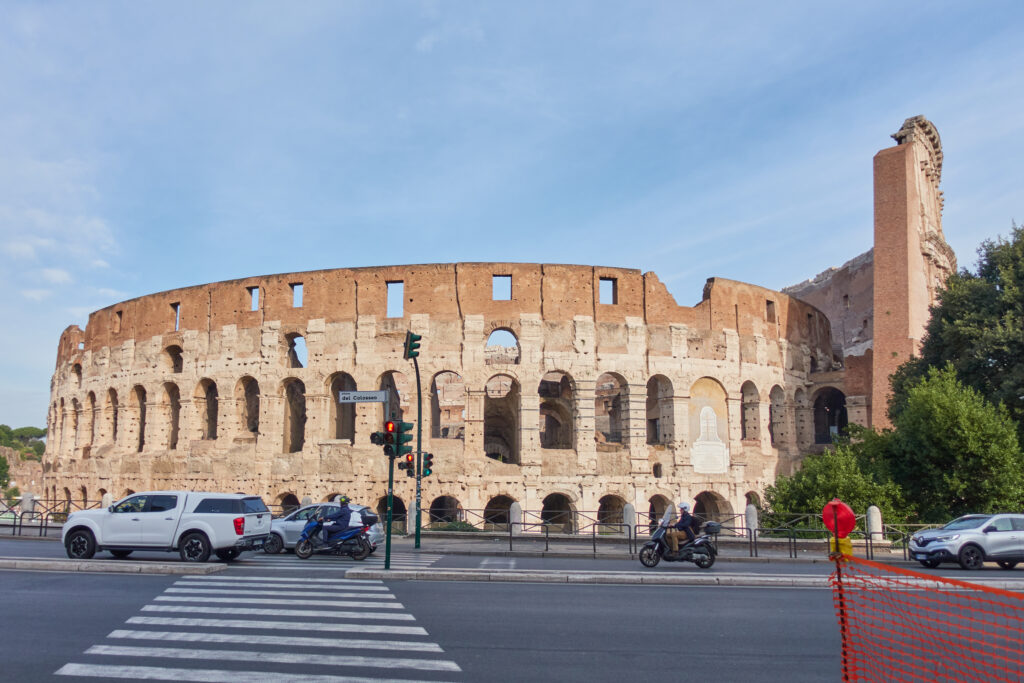
The first bit of trivia we learned as we looked over the building was that this style of building is not generally known as a Colosseum. Instead it is a specific example of an amphitheater! In Greek amphi means something along the lines of two/dual – so an amphitheater is shaped like two theaters mashed together, giving it more of an elliptical shape compared to a circle. When it was built it was known as the Flavian Amphitheater – named for the family of the emperor who built it. We call it the Colosseum because in front of it used to be the Colossus of Nero – a giant statue of the last Julian emperor. He had built his grand Domus Aurea (the Golden House), which covered an area twice the size of the Vatican, on the ground that the Colosseum now stands on. In fact, the Colosseum is standing on what used to be a man-made lake that was open to the public! The only remaining part of the Domus Aurea is under the park I walked around in the night before. To tie this back to the Colossus – the emperor after Nero didn’t bother to destroy the statue (because it was huge), instead he had it moved to just outside the freshly built Colosseum and changed the face of it so that it was a more idealized being. Everyone apparently still called it the Colossus of Nero though.
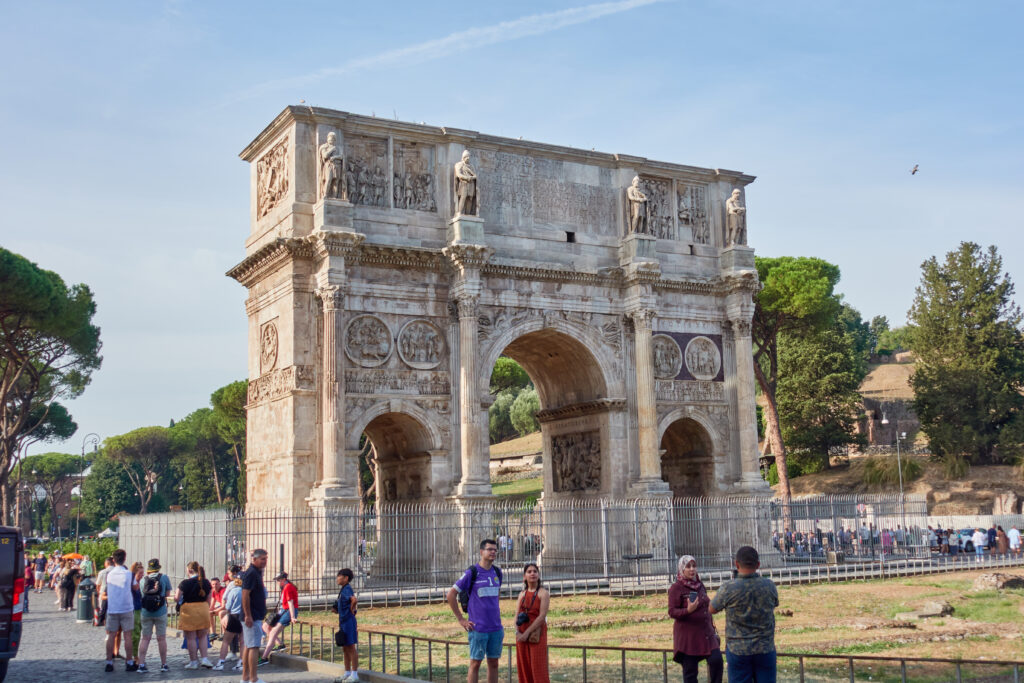
Back to the Colosseum… why does it look the way it does now? Well for starters, archeology wasn’t really a thing until the early 1800’s. Before that everyone would look at things like the Colosseum and think “woah, what an easily available supply of building materials!” The outside was made of a type of limestone called travertine, which would have been white during the 500 years that it was a functional theater. The quarry for this stone is only about 25km from Rome… however it was still much easier to just take it from the ruins of the Colosseum. And that was also probably what it was – ruined, since hundreds of years of disrepair and neglect allowed earthquakes and nature to take over. Also, all the holes in the walls are where blocks meet each other. Originally there were metal fasteners here to keep them together, but, once again – much easier to just chisel out the fasteners than make your own bronze. And finally… the outside of the building was just recently cleaned after a donation of 25 million euros. Inside we could see the soot and grime that covers the walls.
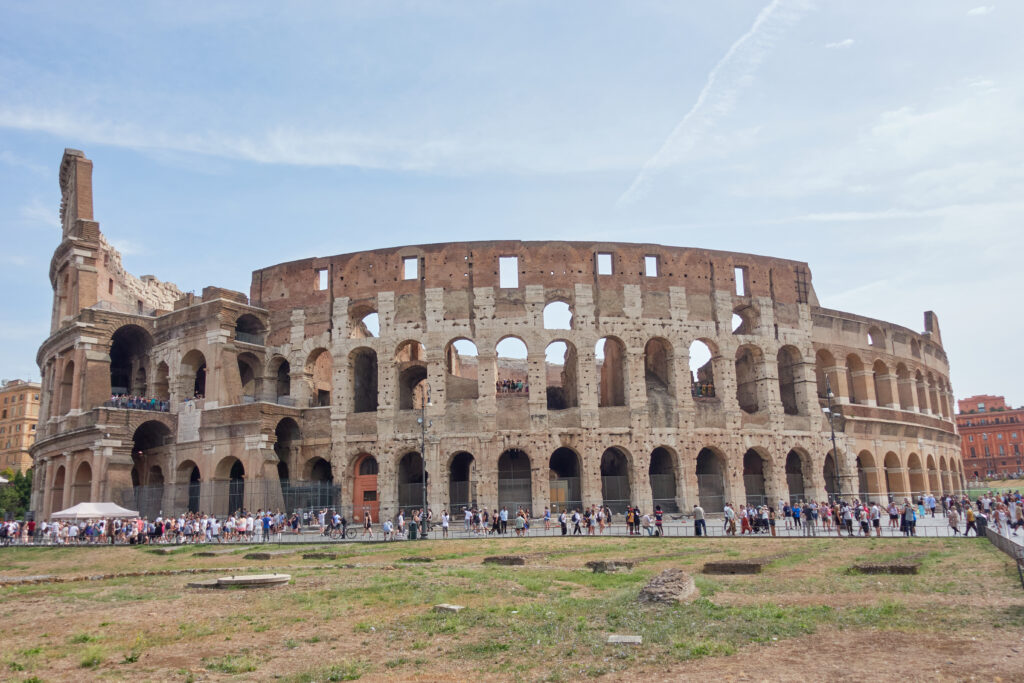
Well… enough about the outside of one building! With our guide we also had skip the line passes. Which lived 100% up to their name, since the line looked to be hours long already and it was only 9 am. We learned a little more about the structure itself once we got inside, then we headed up the stairs to the next level. I’m glad building codes have improved since Roman times, cuz the steps are steep – I can’t imagine having a little bit of wine while watching some gladiators and then navigating those steps. Maybe that was part of the entertainment. Anyway… once we got up there we had a pretty good view of the theater itself. Nowadays the sub-theater is mostly exposed, and there is just one restored part of what it would have looked like while the theater was active. The theater floor would have been covered with sand (for its ease of clean up) which gave it its name – an arena – stemming from the latin word for sand. Under the arena was where all of the staging for the performances would have taken place. From cages for animals, slaves bustling about, and gladiators getting ready.
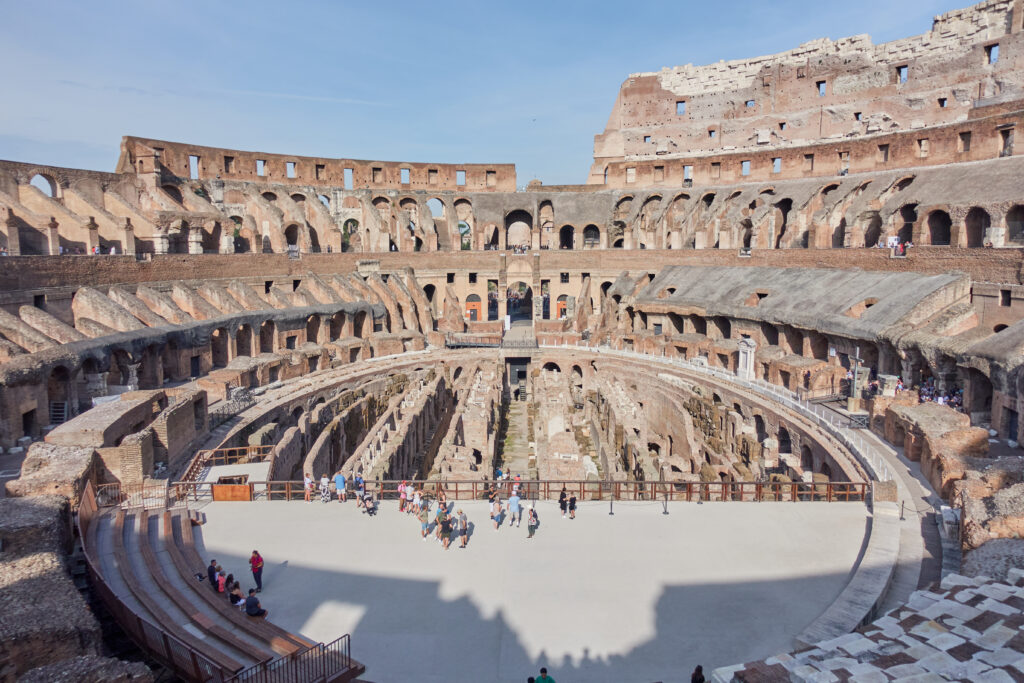
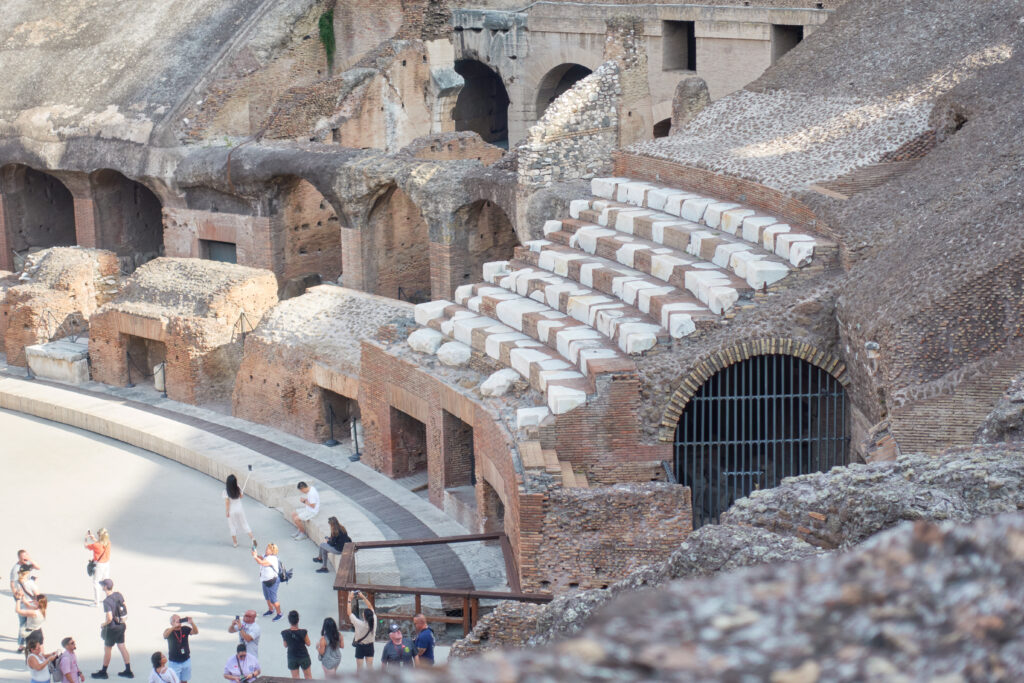
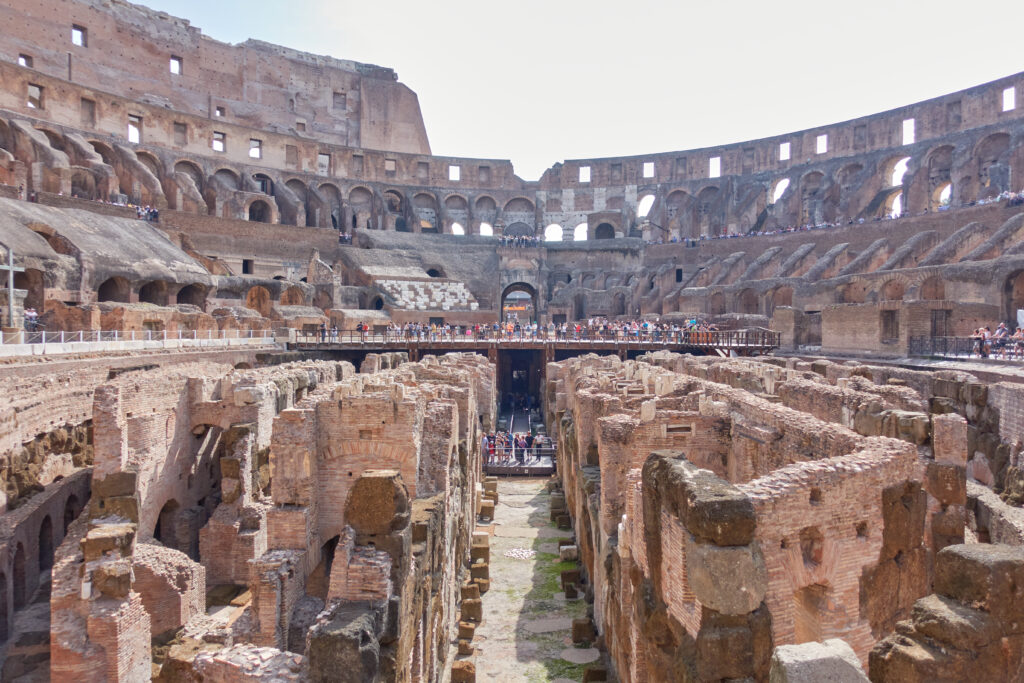
Shows at the Colosseum varied depending on what time of day it was. The morning consisted of animal hunts. We didn’t ask any specifics about this part, which in hindsight I wish we had, but Katia did mention it probably consisted of gladiators pretending to hunt certain animals. Most of them would have been local, but some would have come from northern Africa and probably a select few came from farther away. Over lunch was public executions. You know… exactly what helps with digestion. And then the afternoon was gladiator combats. Katia stressed an important thing – the Colosseum was historically not a site for religious persecution of Christians. Some Christians were executed, some were gladiators, and so on. But only because they happened to commit some crime that called for their public execution. They weren’t killed in the Colosseum BECAUSE they were Christian… they were killed there and happened to also be Christian.
Now, Emperor Vaspacio (I forget his name but that’s close), and all the emperors who followed, used the Colosseum to entertain the masses. That meant everyone could go, and everyone could go for free. The first several rows of seats were made of marble, and were probably reserved for specific people. Senators and Vestal Virgins got the first row of seats, while progressively less important people occupied higher rows. Until you got to the fifth section, which was where women and slaves sat. At least everyone got to go! (That’s the spin Katia put on women being put up high with the slaves). There were also fountains (all that remains of them is a cross in the stone where the plumbing was) and public restrooms. All in all pretty incredible for a building that was built in ~70 AD (and only took 8 years to build! Amazing what you can do with slave labor)
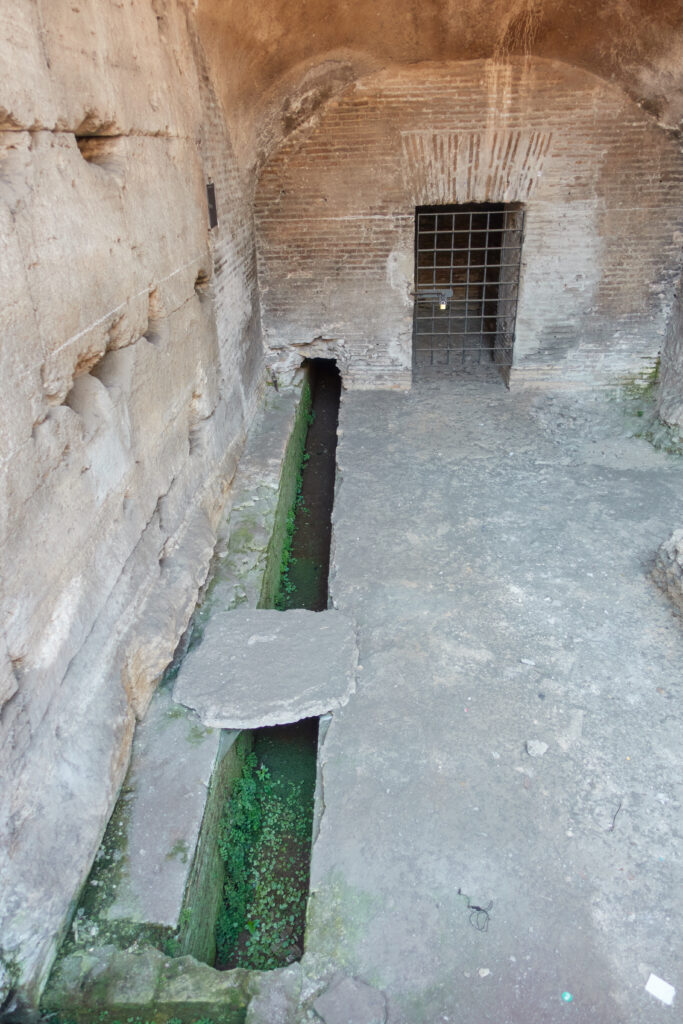
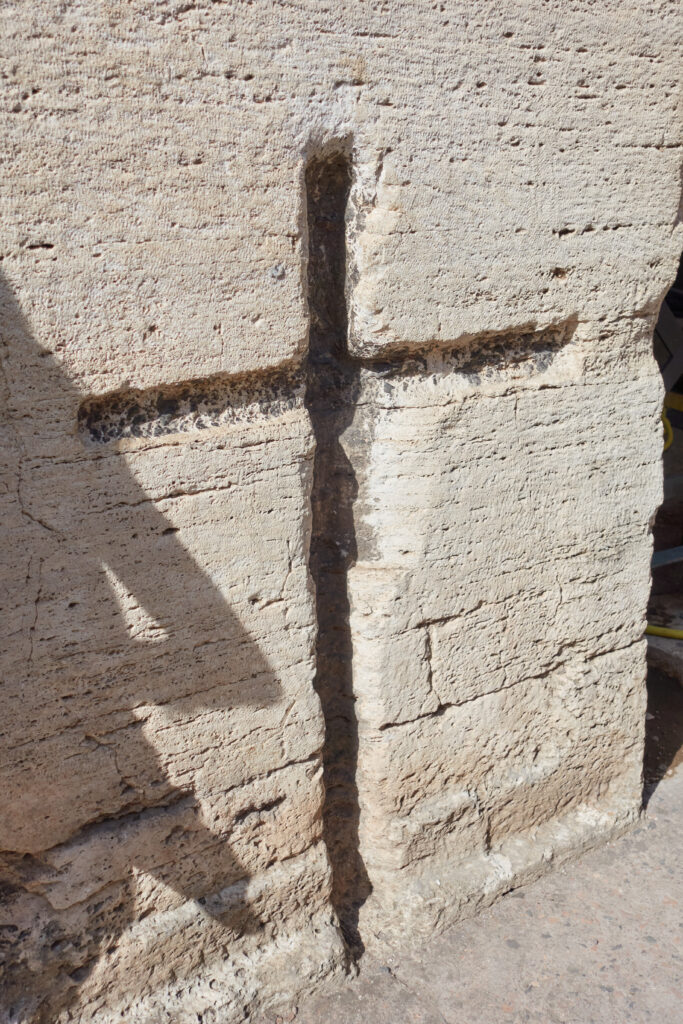
Next up on the agenda was a short walk over to the Roman Forum. The forum was excavated beginning in the early 1800’s under orders from Napoleon. He figured there had to be something down there. Forums were the centers of Roman cities. Most of them had pretty small forums, but Rome’s of course had to be huge. The buildings that are left have all basically been turned in to churches, everything else is in various states of being a ruin. The first “building” (well, like 1/3 of a building) we went in to was a Roman basilica. Roman basilicas were used as kinda an equivalent to a courthouse. As opposed to modern basilicas which are churches. In ancient times the basilica was a grand building complete with red marble and decorations. All that fun stuff has been looted, with only one sad column fragment of the red marble remaining (red marble comes from Egypt, and the Romans basically harvested all of it that could be found.) A little ways down the street was a rather unique temple/church. It was originally dedicated to an emperors wife, who became a diva – a goddess – later, after the emperor died, he too became a god. They just added a dedicating above her name to signify the temple was for both of them.
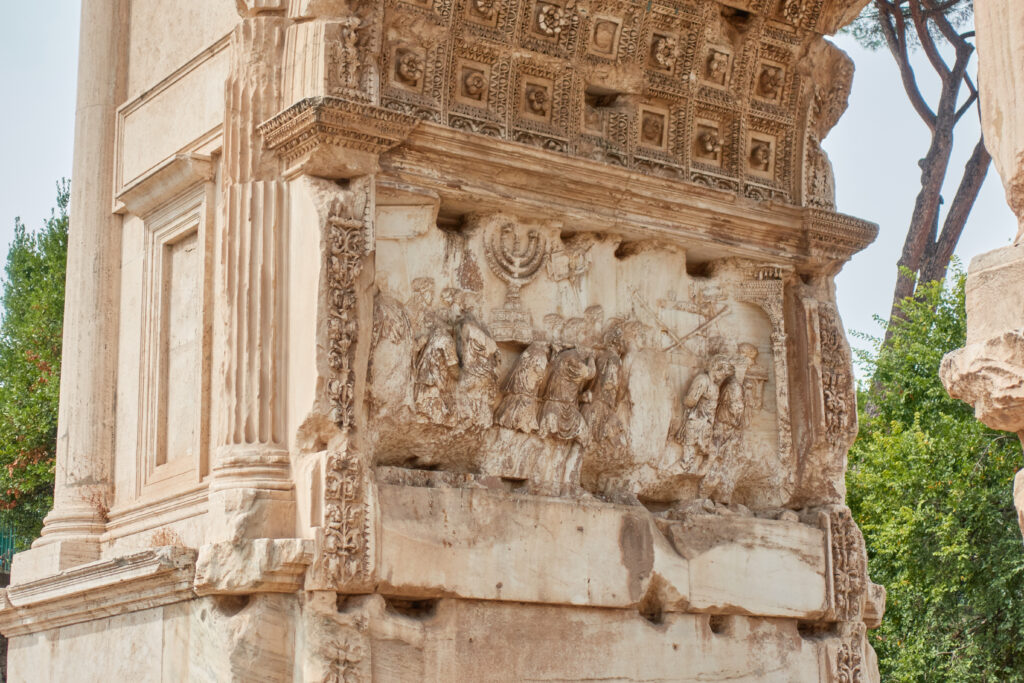
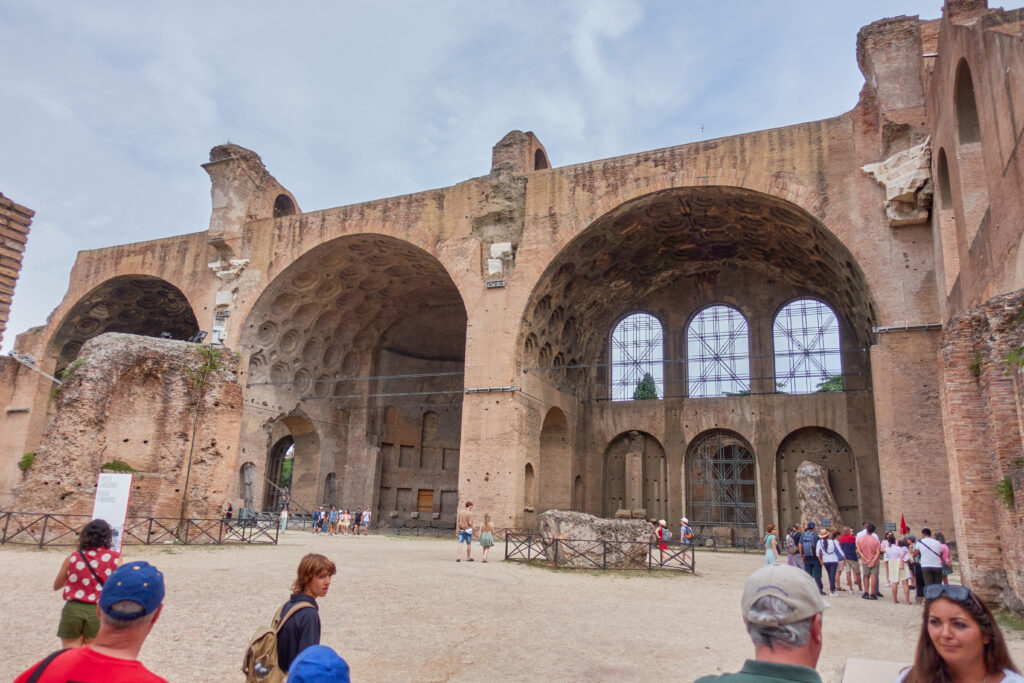
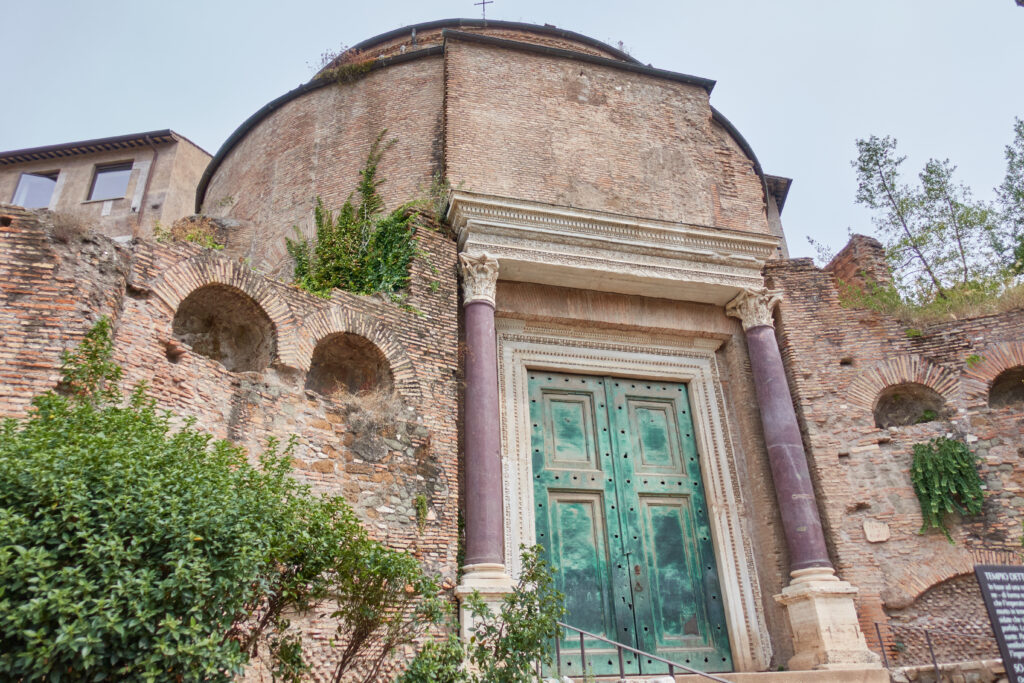
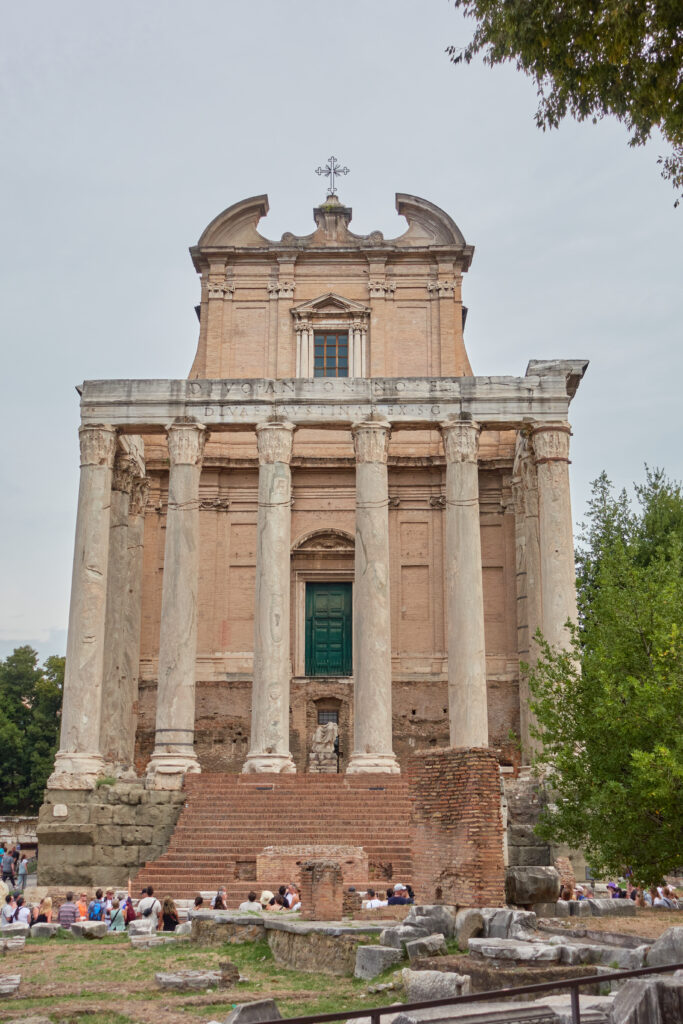
Across the street from that temple was the home of the Vestal Virgins. These women/girls were pretty much the most important women/girls in all of Rome. They were even allowed to sit on the first row of seats in the Colosseum. That was pretty much the only good thing about their lives though from what I could tell. They were tasked with keeping the eternal flame of Rome lit. They were also so holy that nobody could touch them… and if they were bad they were executed by being buried alive. Cuz, ya know, that doesn’t involve touching them. The only exception was the mother of Romulus and Remus. She claims that it was no mere man who came to her, but the god Mars himself. So of course, it’s totally fine if a god touches her. Just not a regular man. I wonder how many times that excuse was used. Now all of this stuff was technically not in the actual forum of Rome, but sat just outside of it. The entrance to the Roman forum was marked by the temple to Vesta (which housed the eternal flame) and right nearby was the temple to Julius Caeser. It was at that site that they decided to cremate him… which somehow turned him in to a god. Funny how it’s pretty much the exact opposite of what the Egyptians would do.
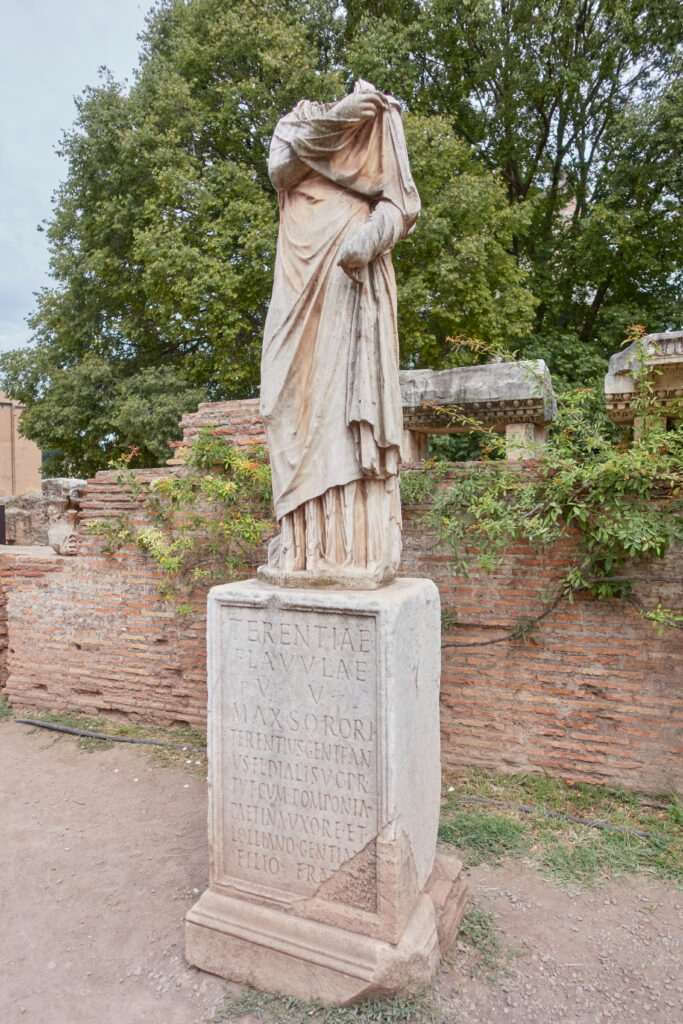
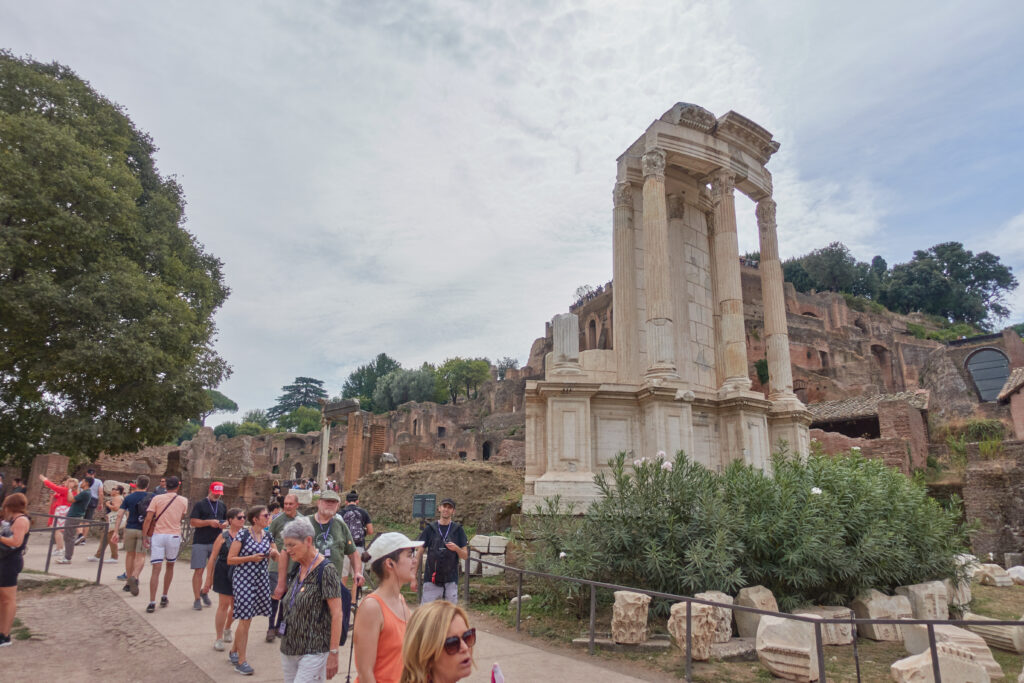
After our morning history lesson, we had a relatively new activity for our trip… a free afternoon! I decided it was the perfect time to read on our little balcony garden and Adela took a nap. I later joined her in napping, not sure I ever got used to the time change. After a quick little reading/nap break we took an Uber over to the Pantheon. The Pantheon is a more-or-less intact Roman temple that has been completely converted into a church. Actually, that’s the primary reason any Roman building remained intact. Anyway… my credit card got declined for the kinda sketchy site to buy tickets to go in to the pantheon so we had to skip that part. Instead we went to a nearby church – Santa Maria di Minerva (or something along those lines… they built a church on top of an old temple to Minerva). We went there because there is a Michaelangelo sculpture that not too many people know about. We got shushed a few times because there was a service going on, but eventually we were able to get pretty close. Afterwards we walked over to the Trevi Fountain to get a look, mostly we battled crowds to get close enough to get a look but it was worth it. It’s insane to think that the fountain is just a little bit older than the United States.
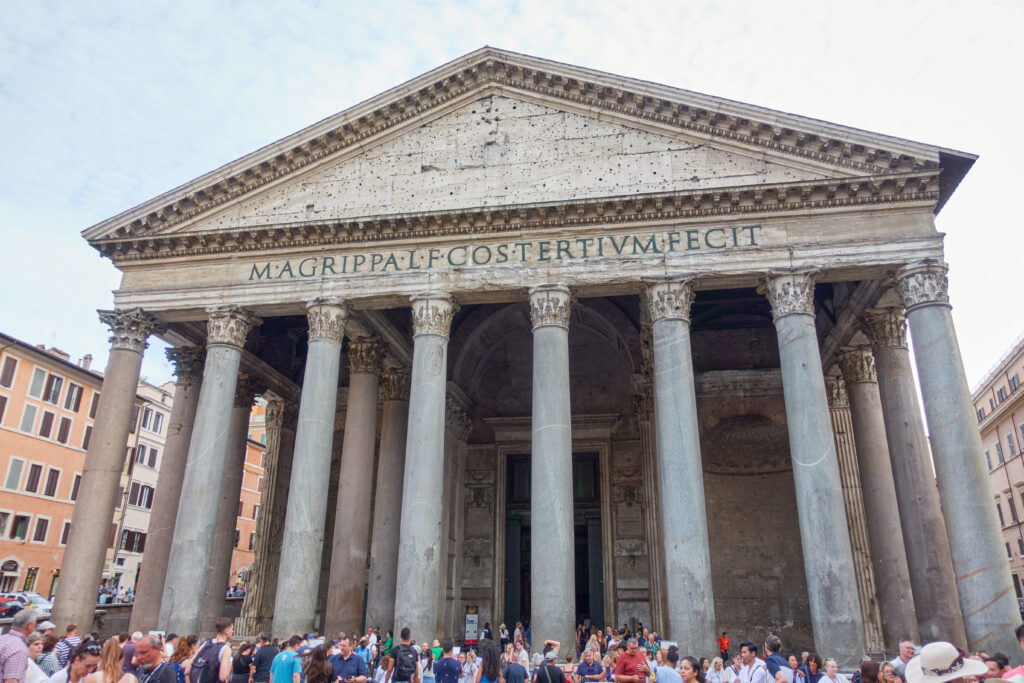
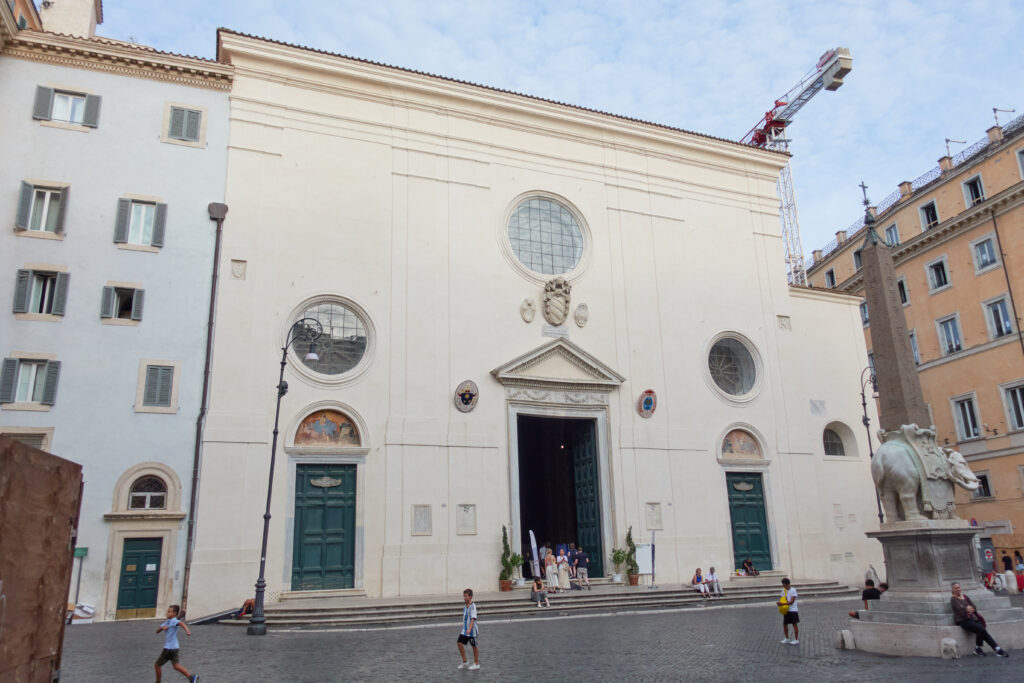

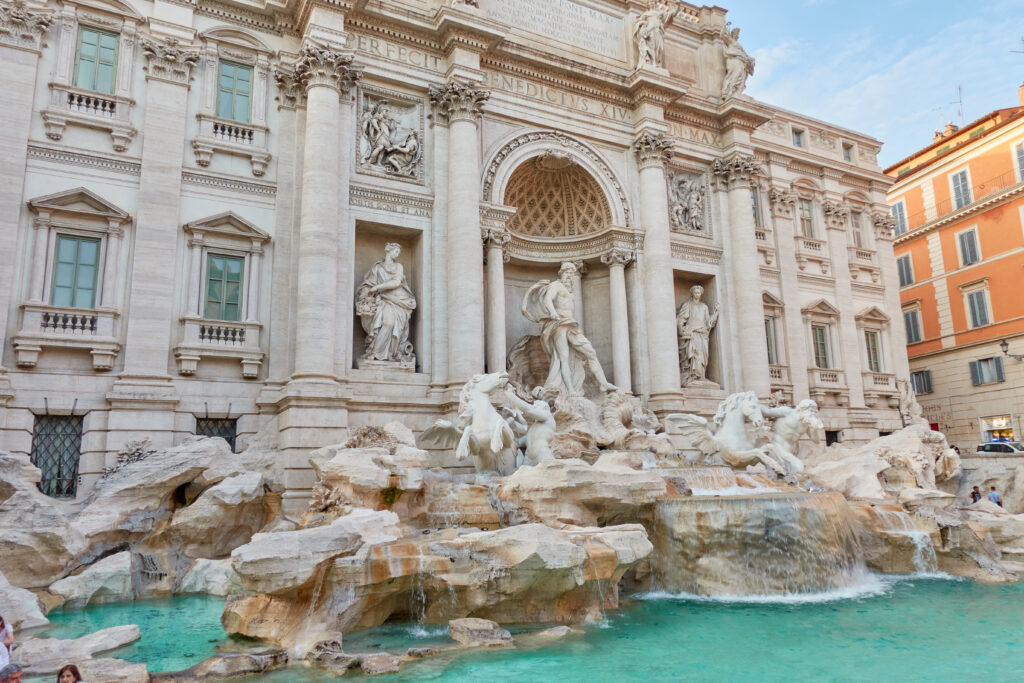
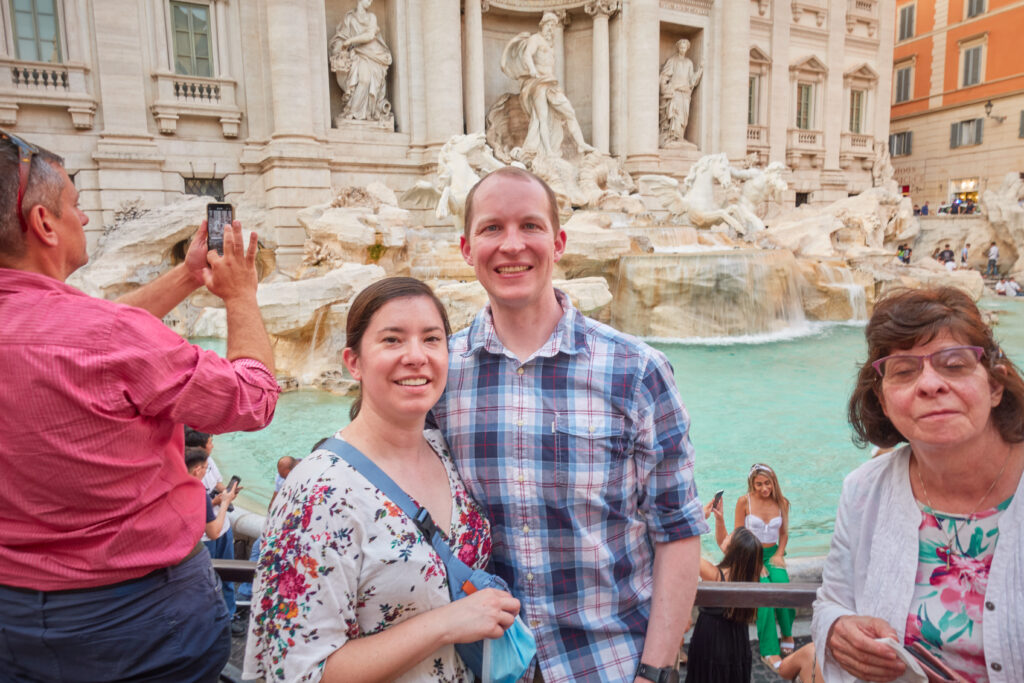
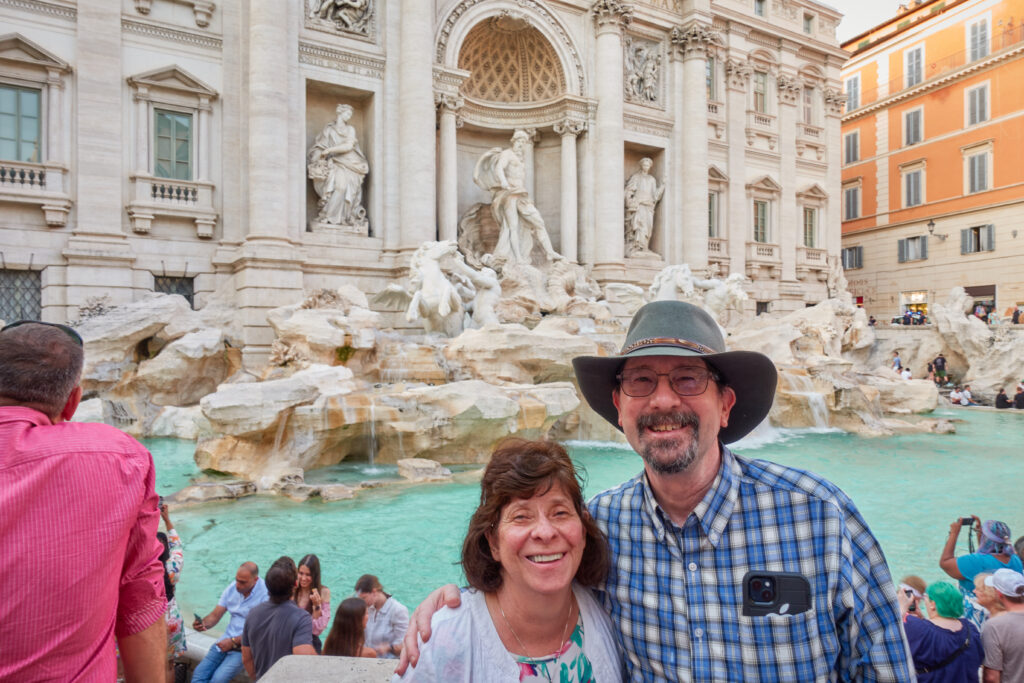
The restaurant I had gotten reservations at didn’t open until 7:30 so we hung out on a random corner before meandering back over. It turns out that it’s a crazy popular restaurant since the whole thing filled up right at 7:30, and there were even couples waiting there to see if they got lucky and could just get in! The pasta was fantastic. I got ravioli-esque pasta stuffed with pumpkin (it was like tortelloni? Tortelli?) and wished I had just ordered another pasta dish for the second course because the beef was kinda eh. For dessert I got some tiramisu… however Adela was told by the waiter that she needed to order the lemon meringue. He thought it was so that we could share, little did he know that we all would jealously guard our desserts. Hector managed to talk his way in to getting a free glass of dessert wine and Adela and I had some amaro as a digestif. We ubered back to the hotel to get some sleep before History of the World round 2 – the Vatican.
